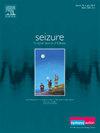药物试验中癫痫发作频率增加图表:FDA标签vs.同行评审
IF 2.8
3区 医学
Q2 CLINICAL NEUROLOGY
引用次数: 0
摘要
目的抗癫痫药物(asm)可降低某些患者的癫痫发作频率(SF)。然而,即使ASM是有效的,一些患者在开始治疗后仍会出现SF增加,这主要是由于自然波动。在不同的试验出版物之间,那些经历增加的图表交流可能有所不同。我们评估了美国食品和药物管理局(FDA)批准的处方标签和同行评议文献中显示的asm试验中SF增加的患者百分比的图形表示的差异。方法检索同行评议文献,检索2000-2024年间fda批准的抗癫痫药物辅助治疗处方标签中引用的随机临床疗效试验。然后,我们评估了是否存在系统性差异的选择,以图形显示SF增加的患者百分比。结果2000-2024年间,共有16种asm获批用于辅助治疗。16个标签的临床疗效参考文献共43篇。同行评议的期刊包括图表SF增加23% (95% CI: 12%至39%),而fda批准的标签为63% (95% CI: 35%至85%)。存在图表的绝对差异为39% (95% CI: 8%至65%)(卡方= 6.359,p值= 0.012)。当文本和表格被纳入同行评审期刊时,51%的试验(43个试验中有22个)SF增加了。结论:与fda批准的标签相比,最近16个fda批准的asm的同行评议出版物没有充分告知临床医生SF增加患者的百分比,这可能会影响知情的共同决策。本文章由计算机程序翻译,如有差异,请以英文原文为准。
Increased seizure frequency graphs in medication trials: FDA labels vs. peer-review
Objective
Anti-seizure medications (ASMs) typically reduce seizure frequency (SF) in some patients. However, even when the ASM is effective, some patients experience increased SF after initiation largely due to natural fluctuations. Graphical communication of those that experience an increase can vary between trial publications. We assessed the difference in graphical representation of the percentage of patients showing increased SF in ASMs trials between the U.S. Food and Drug Administration (FDA) approved prescribing labels and those in the peer-reviewed literature.
Methods
We searched peer-reviewed literature for the initial publication of randomized clinical efficacy trials referenced in the prescribing labels of FDA-approved ASMs for adjunctive treatment of epilepsy from (2000–2024). We then assessed whether a systematic difference existed in the choice to graphically display the percentage of patients with an increase in SF.
Results
There were 16 ASMs approved for adjunctive treatment between 2000–2024. There were 43 studies referenced for clinical efficacy in the 16 labels. Peer-reviewed journals included graphs SF increases in 23 % (95 % CI: 12 % to 39 %) compared to FDA-approved labels in 63 % (95 % CI: 35 % to 85 %). The absolute difference in the presence of the graphs was 39 % (95 % CI: 8 % to 65 %) (Chi-squared = 6.359, p-value = 0.012). When text and tables were included peer-review journals presented SF increases in 51 % of the trials (22 out of 43).
Conclusion
Compared to FDA-approved labels, the peer-reviewed publications of the last 16 FDA-approved ASMs under-informed clinicians about the percentage of patients with increased SF, which may impact informed shared decision-making.
求助全文
通过发布文献求助,成功后即可免费获取论文全文。
去求助
来源期刊

Seizure-European Journal of Epilepsy
医学-临床神经学
CiteScore
5.60
自引率
6.70%
发文量
231
审稿时长
34 days
期刊介绍:
Seizure - European Journal of Epilepsy is an international journal owned by Epilepsy Action (the largest member led epilepsy organisation in the UK). It provides a forum for papers on all topics related to epilepsy and seizure disorders.
 求助内容:
求助内容: 应助结果提醒方式:
应助结果提醒方式:


